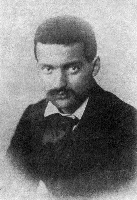The Post Impressionists were a few independent artists at the end of the 19th century who rebelled against the limitations of Impressionism to develop a range of personal styles that influenced the development of art in the 20th century. The major artists associated with Post Impressionism were Paul Cézanne, Paul Gauguin, Vincent Van Gogh and Georges Seurat.
Cézanne was an important influence on Picasso and Braque in their development of Cubism. Van Gogh's vigorous and vibrant painting technique was one of the touchstones of both Fauvism and Expressionism, while Gauguin's symbolic color and Seurat's pointillist technique were an inspiration to Les Fauves.
Manet and the Post-Impressionists
1910-1910
The Bloomsbury Group’s most direct contribution to the change in human character that Virginia Woolf analyzes in "Mr. Bennett and Mrs. Brown" was the first Post-Impressionist Exhibition, “Manet and the Post-Impressionists” (1910). The exhibition focused on the work of Cézanne, Van Gogh, and Gauguin, but also attempted to outline a trajectory from Manet down to the most recent “post-impressionists,” Matisse and Picasso, who were both represented in the exhibition.
Most British art critics in 1910 were still trying to digest the impressionism of Monet and Renoir, and the new exhibition, by rejecting impressionism as old-fashioned, baffled even sympathetic observers. E. M. Forster wrote that “Gauguin and Van Gogh were too much for me.”[1] Many viewers and critics thought the show a hoax or an offense against English culture. The art historian Charles Harrison has listed some of the words applied to the exhibition: “horror,” “madness,” “infection,” “sickness of the soul,” “putrescence,” “pornography,” “anarchy” and “evil.”[2] A few, however, defended the exhibition, and the consummate Edwardian Arnold Bennett suggested that the scorn heaped on modern art by the British public showed “that London is infinitely too self-complacent even to suspect that it is London and not the exhibition which is making itself ridiculous.”[3]
The champions of modernity in art shared Bennett’s sense that London was woefully behind the times. English artists soon began to absorb the influences of Matisse and the early, pre-cubist Picasso. A second Post-Impressionist Exhibition in 1912 displayed paintings by Bloomsbury artists like Duncan Grant and Vanessa Bell alongside works
by the major French painters and a number of rather obscure Russians.
Manet and Post-Impressionism
1910-1910
An exhibition organized by Robert Fry who was an art critic. The show was all about the French painter Edouard Manet and his post-impressionist work of arts. The exhibition also had works of other young artists of works post-impressionism.














